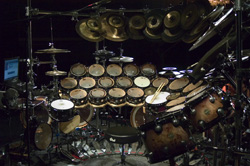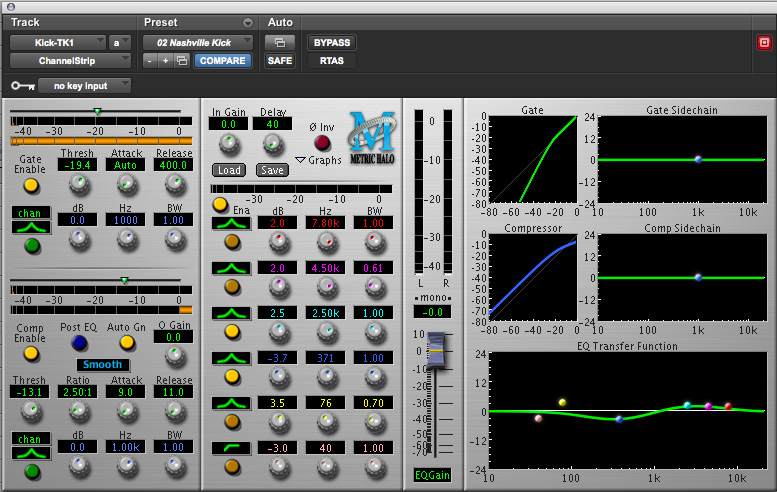
Also see “EQ And Compression For Vocals & Acoustic Guitar.”
Despite the preponderance of exceptional drum samples and loops on the market, for certain genres of music (notably country and rock) there is no substitute for a great session drummer playing on a well-recorded and mixed drum kit.
One thing that samples and loops can’t provide is the great rhythmic instincts an accomplished live player draws upon when responding to a specific song.
However, getting a great player (while certainly a significant element) is not the entire story.
The appropriate treatment of the drums in a mix with EQ and compression can make the difference between a lifeless, vague sound and an exciting, textured and genuinely rhythmic drum track.
Even though the drummer plays the entire kit as a single instrument, the miking of individual drums and cymbals can make for a very complicated mix scenario.
The reason I reference country and rock music specifically has to do with the fact that in these genres the sounds of the individual drums and cymbals are not only singled out by individual microphones placed on each of them but also their sounds are exaggerated to create an even more dramatic effect.
Consider, for example, the tom fills in Phil Collins’ “In The Air Tonight.” By contrast, jazz drums are often treated as a more cohesive, unified sound and it’s not unusual to use a simple pair of overhead mics to capture the sound of the entire jazz drum kit.
In this article, I’m going to go drum by drum providing EQ and compression settings that will, hopefully, provide you with a jumping off point to getting great drum sounds in your mix.
Because of its all-in-one mixing board channel approach, I’ll be using Metric Halo’s Channel Strip plug-in with its EQ, compression and noise-gate to illustrate my comments about various EQ and compression settings.
Kick Drum
As the heartbeat of the contemporary drum kit, the kick drum sound we’ve grown accustomed to hearing is both boomy and round on the bottom and has a nice, bright click in the high mid range. It’s the balancing act between EQ and compression that gives the kick drum its ability to stand out in a mix.
Beginning with EQ, the best way to accentuate the lows and highs is to remove some low-mids. I’m a big believer in cutting as opposed to boosting EQ to achieve a desired effect. As a result, I tend to pull somewhere between 2 to 4db at between 350hz-450hz.
Then, after removing some of this low-mid mud from the sound, I can enhance the clicking sound of the beater hitting the head of the kick drum by boosting around 2db in the 2k-3k range. I’m providing approximate dB and frequency range settings because depending on the kick drum, mic placement and, of course the drummer, all of these settings will vary. Use these general ranges as a jumping off point and then trust your ears.
As far as compression settings go, the trick is to preserve the transient attack of the kick drum with a fast but not too fast attack time (9ms in this instance) and then a quick release (11ms) so the compressor is ready to respond to the next kick drum hit. The ratio I use is a relatively mild 2.5:1 and I adjust the threshold until I hear the kick sound I’m searching for.
Finally, in order to give the kick drum sound some separation from the rest of the kit, I use a noise gate and adjust the threshold to allow the kick sound to come through while essentially muting the majority of the other drum/cymbal sounds. Also, while setting the attack to the Channel Strip’s fastest “auto” setting, I allow for a long (400ms) release.





















